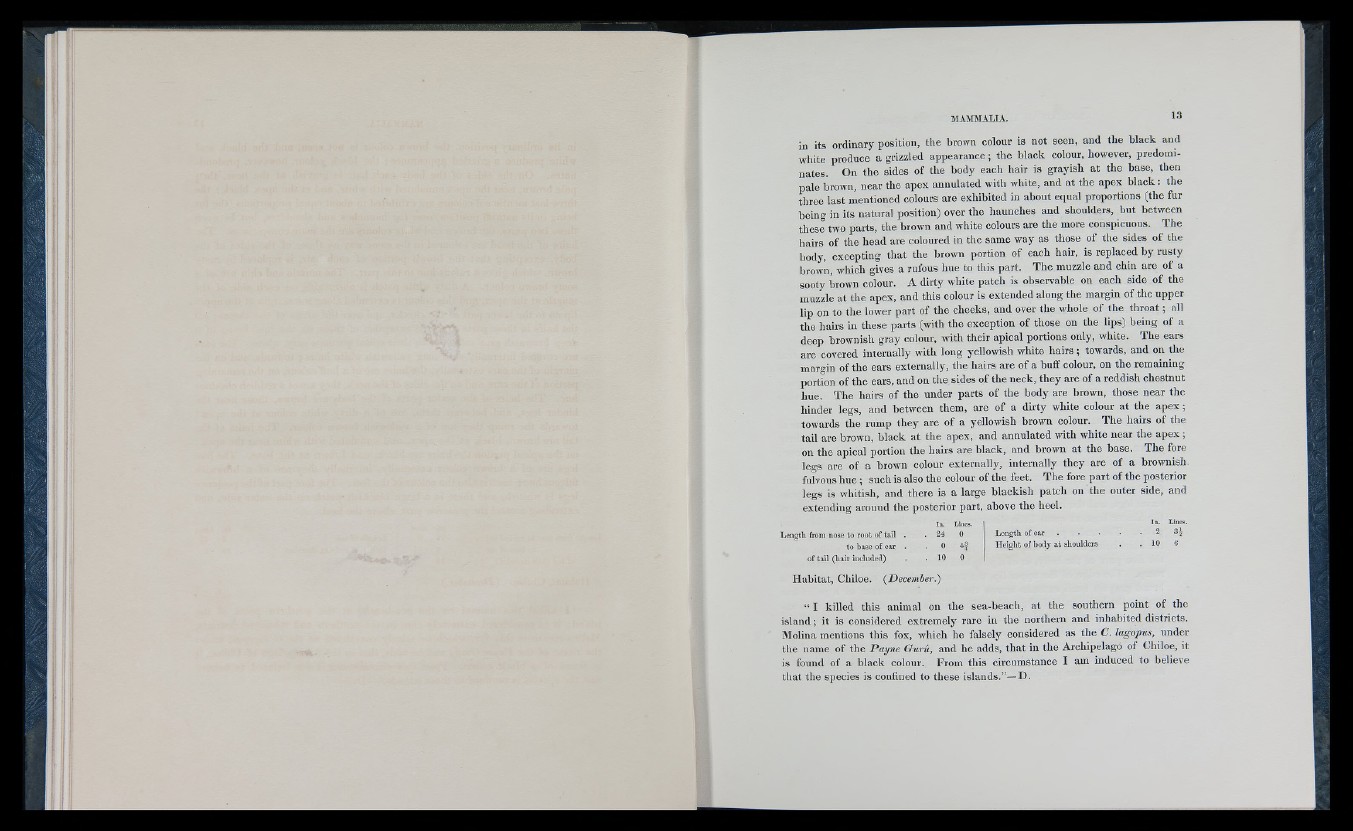
in its ordinary position, the brown colour is not seen, and the black and
white produce a grizzled appearance; the black colour, however, predominates.
On the sides of the body each hair is grayish at the base, then
pale brown, near the apex annulated with white, and at the apex black: the
three last mentioned colours are exhibited in about equal proportions (the fur
being in its natural position) over the haunches and shoulders, but between
these two parts, the brown and white colours are the more conspicuous. The
hairs of the head are coloured in tlie same way as those of the sides of the
body, excepting that the brown portion of each hair, is replaced by rusty
brown, which gives a rufous hue to this part. The muzzle and chin are of a
sooty iirown colour. A dirty white patch is observable on each side of the
muzzle at the apex, and this colour is extended along the margin of the upper
lip on to the lower part of the cheeks, and over the whole of the throat; all
the hairs in these parts (with the exception of those on the lips) being of a
deep brownish gray colour, with their apical portions only, white. The ears
are covered internally with long yellowish white hairs ; towards, and on the
margin of the ears externally, the hairs are of a buff colour, on the remaining
portion of the ears, and on the sides of the neck, they are of a reddish chestnut
hue. The hairs of the under parts of the body are brown, those near the
hinder legs, and between them, are of a dirty white colour at the apex;
towards the rump they are of a yellowish brown colour. The hairs of the
tail are brown, black at the apex, and annulated with white near the apex ;
on the apical portion the hairs are black, and brown at the base. The fore
legs are of a brown colour externally, internally they are of a brownish
fulvous hue ; such is also the colour of the feet. The fore part of the posterior
legs is whitish, and there is a large blackish patch on the outer side, and
extending around the posterior part, above the heel.
Length from nose to root of tail . . 24
to base of ear . . 0
of tail (hair included) . . 10
Habitat, Chiloe. (December.)
Lines.
0 Length of ear .
H eight of body at shoulders
In. Lines. 2 3-4
10 6
“ I killed this animal on the sea-heach, at the southern point of the
island; it is considered extremely rare in the northern and inhabited districts.
Molina mentions this fox, which he falsely considered as the C. lagopus, under
the name of the Payne Gurú, and he adds, that in the Archipelago of Chiloe, it
is found of a black colour. From this circumstance I am induced to believe
that the species is confined to these islands.”—©.